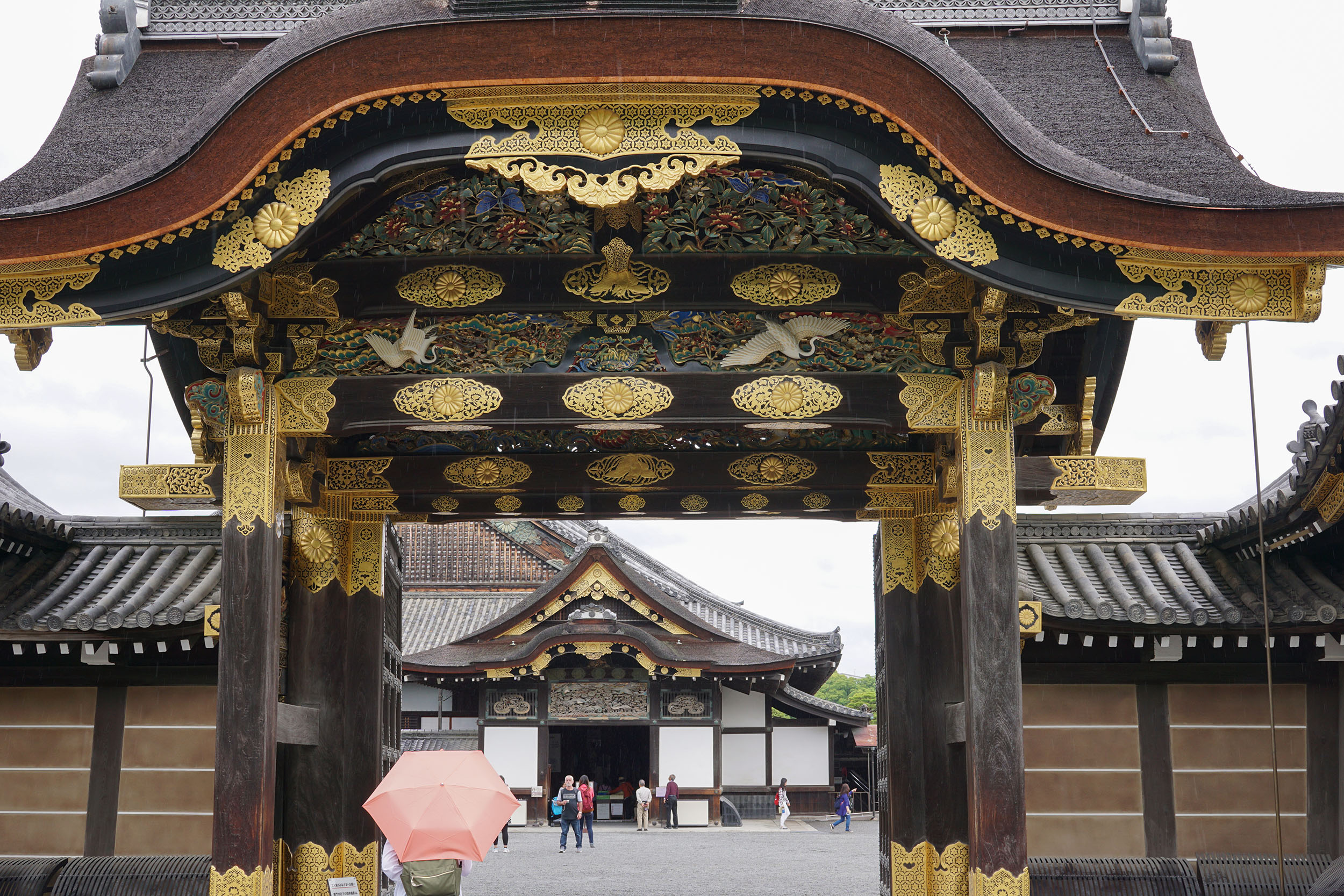I had wanted to visit Nijo Castle during our first trip to Kyoto in 2013. I had put it on our list for our arrival day. Due to a flat WiFi device and general plane brain, we didn’t get there. I always kept it in mind for other days if we had spare time, which we never did.
So, when I planned this Japan trip itinerary, I made sure to add visiting Nijo Castle.
History of Nijojo
Built in 1603 for the shogun Tokugawa Leyasu, it served as his Kyoto residence and offices. Twenty three years later his grandson Lemitsu completed the palace and expanded the castle by adding a five-story keep. The castle’s keep was struck by lightning and burned to the ground in 1750. In 1867 the Tokugawa shogunate ended and Nijo castle was used as an imperial palace. It was donated to the city of Kyoto in 1939 and opened to the public. In 1994 Nijo castle was declared a UNESCO world heritage site.
Getting to Nijo Castle
There is a subway exit right outside Nijo Castle. Gojo Station is just steps from where we were staying at The Citadines. After a short ride we transferred to the Tozai line at Karasuma Oike Station. The first stop is Nijojo-mae Station. Upon exiting, the large stone wall is visible across the road. A short walk took us past a turret on the walls corner and to the main entrance.
The exterior 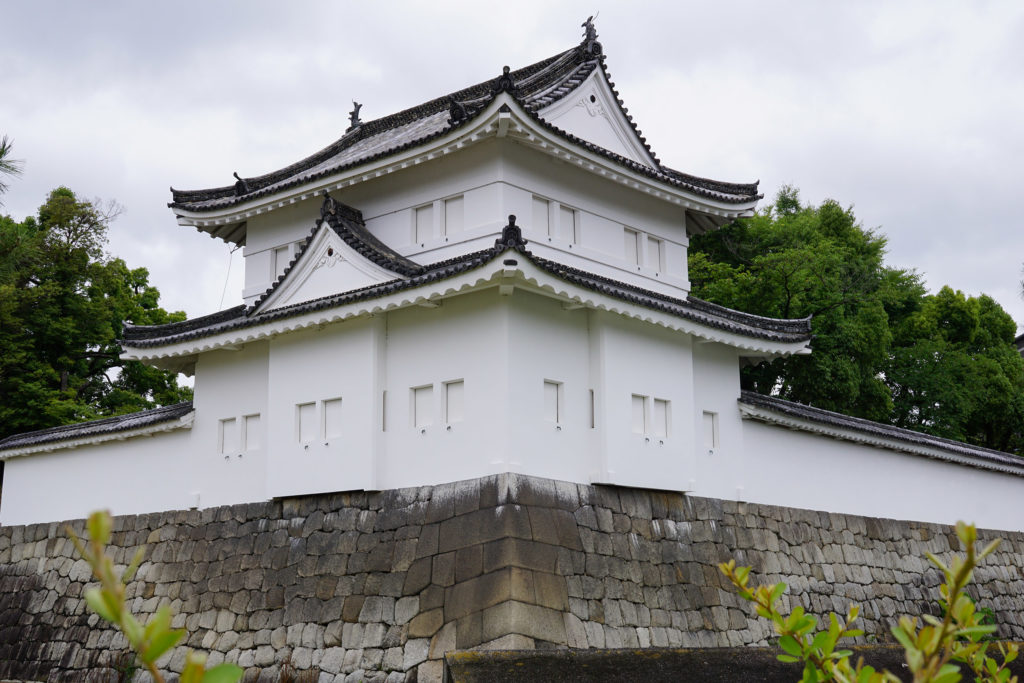
The grounds of Nijo Castle are completely surrounded by stone walls and moats. The small white turret perched on the walls corner as well as the white gate at the main entrance are somewhat misleading as to what lies behind them. Obviously no longer having the main keep, Nijojo is not like the typical castles of Japan. That’s not to say it isn’t impressive. 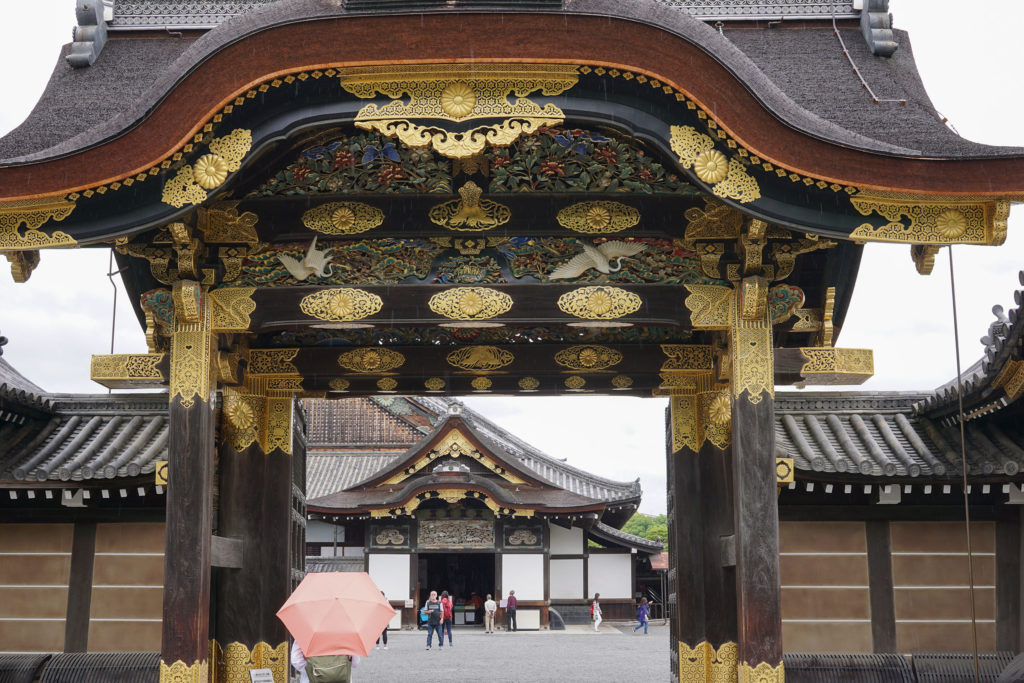
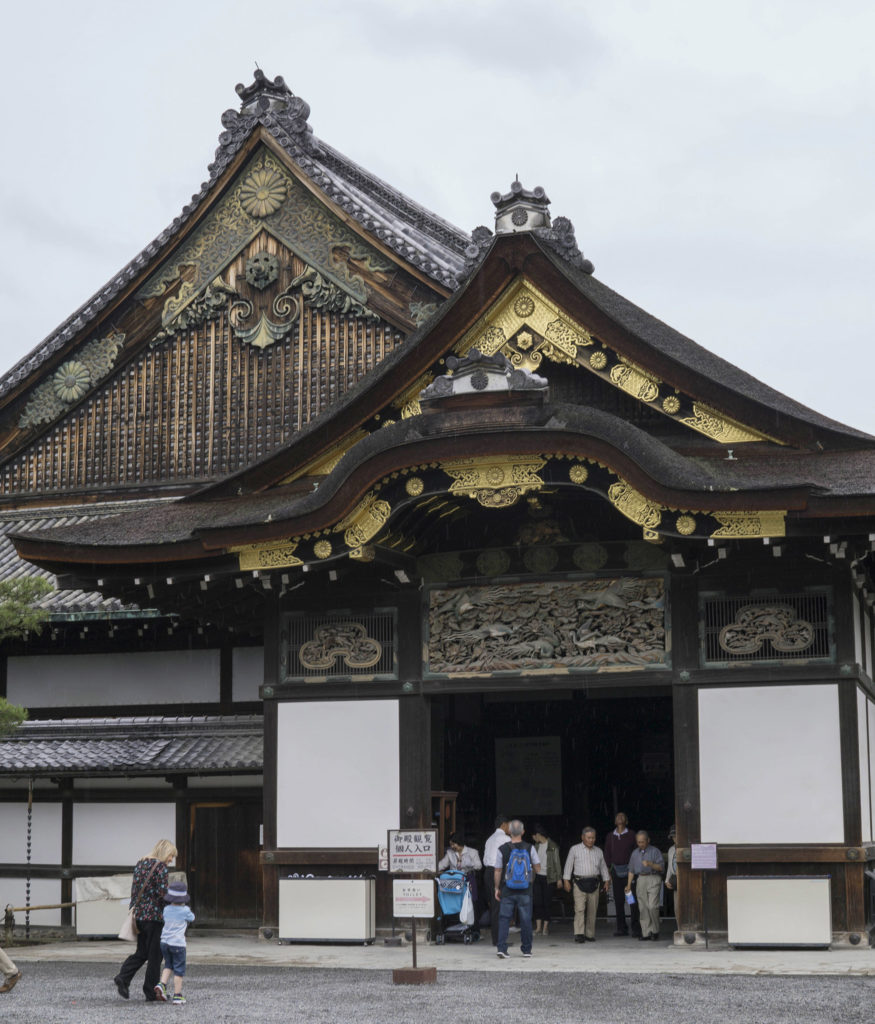
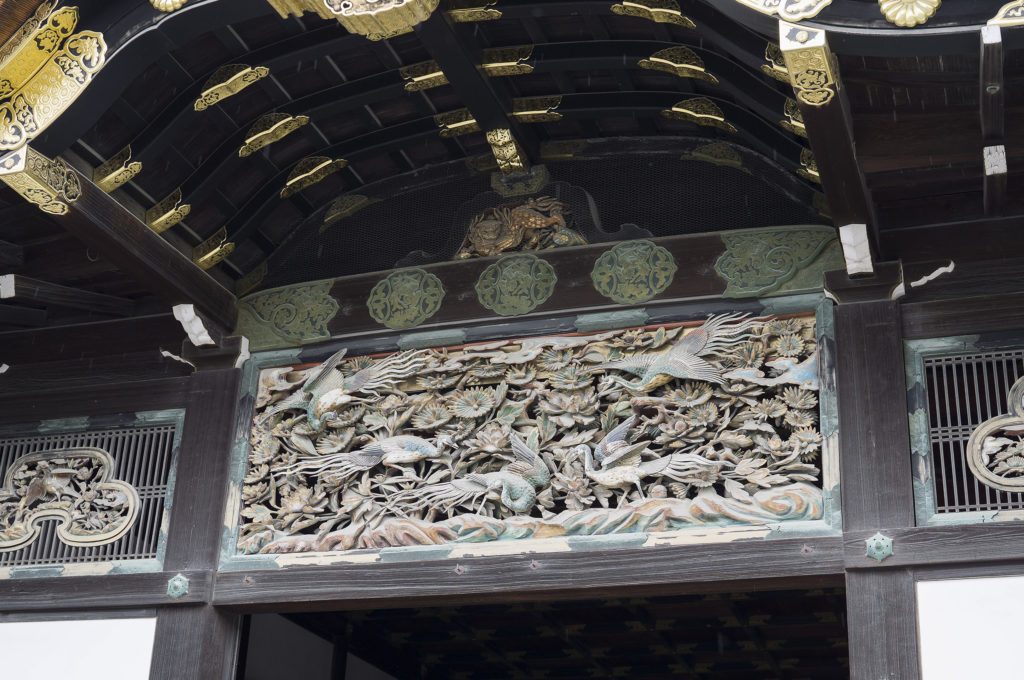
The wooden buildings are intricately carved and decorated with gold leaf. The first of these is the Karamon Gate. This beautifully decorated gate marks the entrance to the secondary circle of defence. Here lies the Ninomaru Palace which is made up of several buildings. The white walls and the dark wood create a stunning contrast. The palace remains in its original form and is a great example of architecture from Japan’s feudal era.
The interior
The entry into Ninomaru Palace begins in a small area where visitors remove their shoes. After placing our shoes on the shelves, we went up the steps and begun the route through the palace interior. I had Declan in the Ergo carrier and told Fletcher he had to stay with us and be quiet inside. We walked along the hallway that connects the buildings, the wooden ‘nightingale’ floor squeaking with our footsteps. The flooring was made to squeak to provide security against intruders. From the hallway we could view the various rooms that were behind ropes. The rooms had tatami flooring and lovely artwork. Signs in English meant we were able to read information about each room and it’s guests as well as facts about the shogun. The main room had mannequins to represent the shogun on a platform and some of his guests.
The gardens 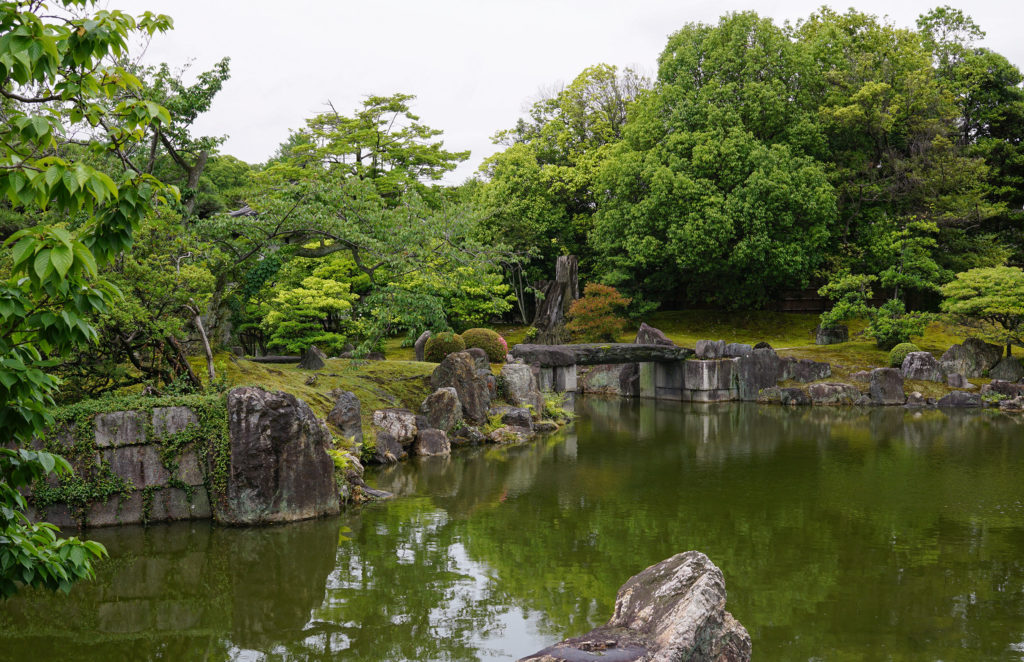
Once we had toured the inside, we collected our shoes and headed through the large wooden gates into the garden. It is a traditional Japanese landscape garden with a large pond as the feature. Surrounding the pond are a number of rocks of varying shapes and sizes. Classic manicured pine trees are dotted around the gardens.
After viewing the Ninomaru gardens we came to a bridge crossing the second moat. We stopped to watch the Koi swimming around. This moat surrounds the Honmaru, the main circle of defense. This is where a second palace and a five-story castle keep were located before both were destroyed by fires in the 18th century. Neither were rebuilt and the present day Honmaru palace is a former imperial residence, re-located from the Katsura Imperial Palace. The Honmaru Palace is only open on special occasions. 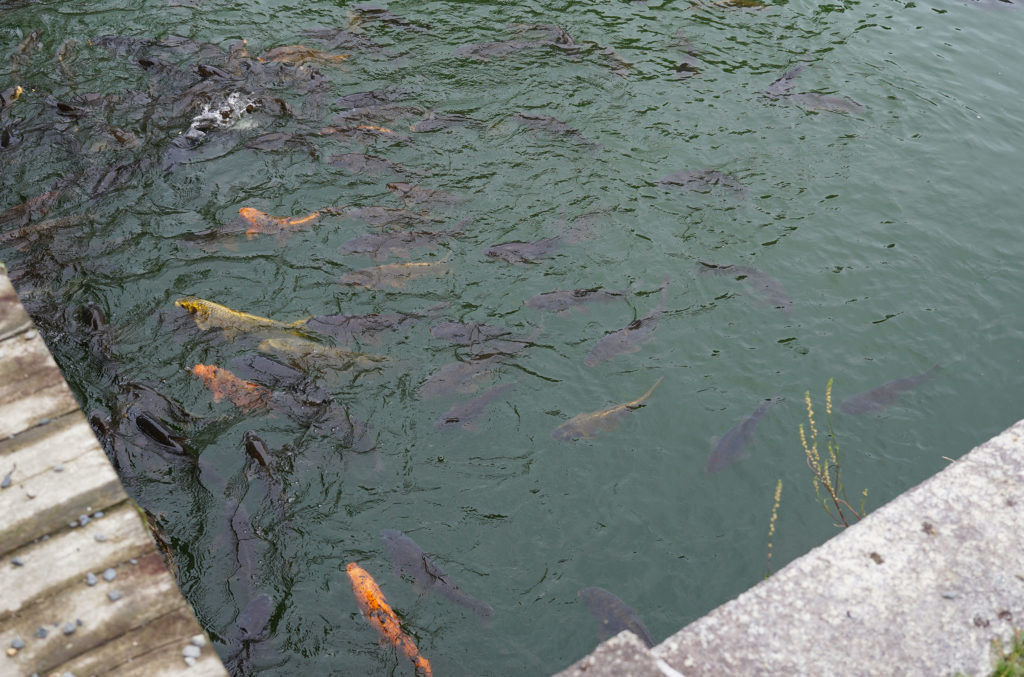
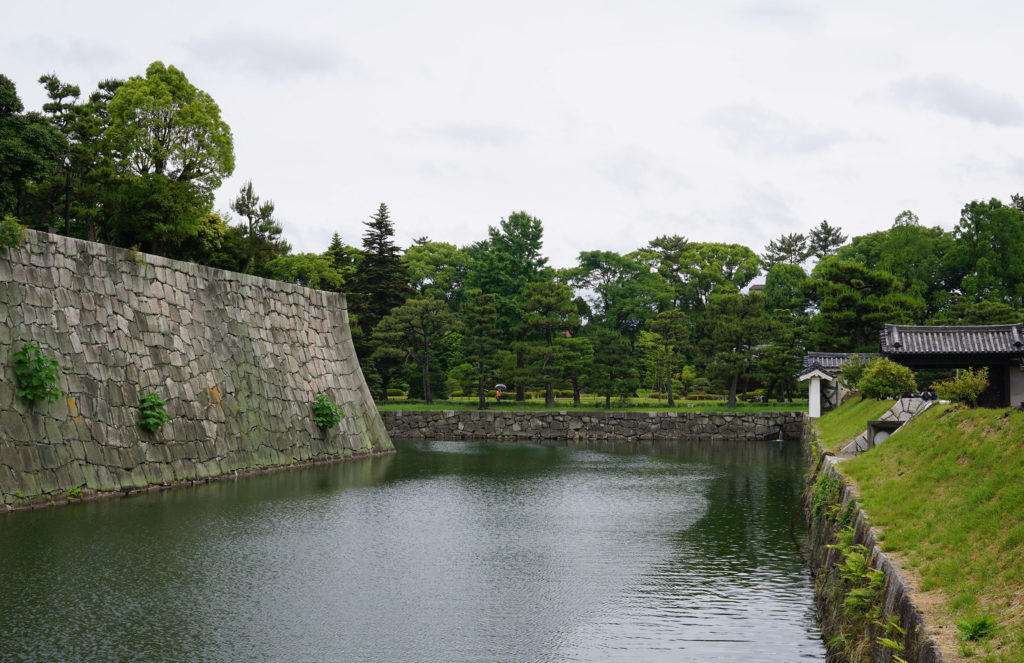
Visitors can still stroll through the gardens which lead to a stone foundation of the former castle keep. The steps up to the foundation are small and steep. Our four year old managed to climb them but needed help getting back down. Standing on the foundation gives you a view over the Honmaru Palace and it’s gardens. I imagine had the castle still been there it would provide a spectacular view. 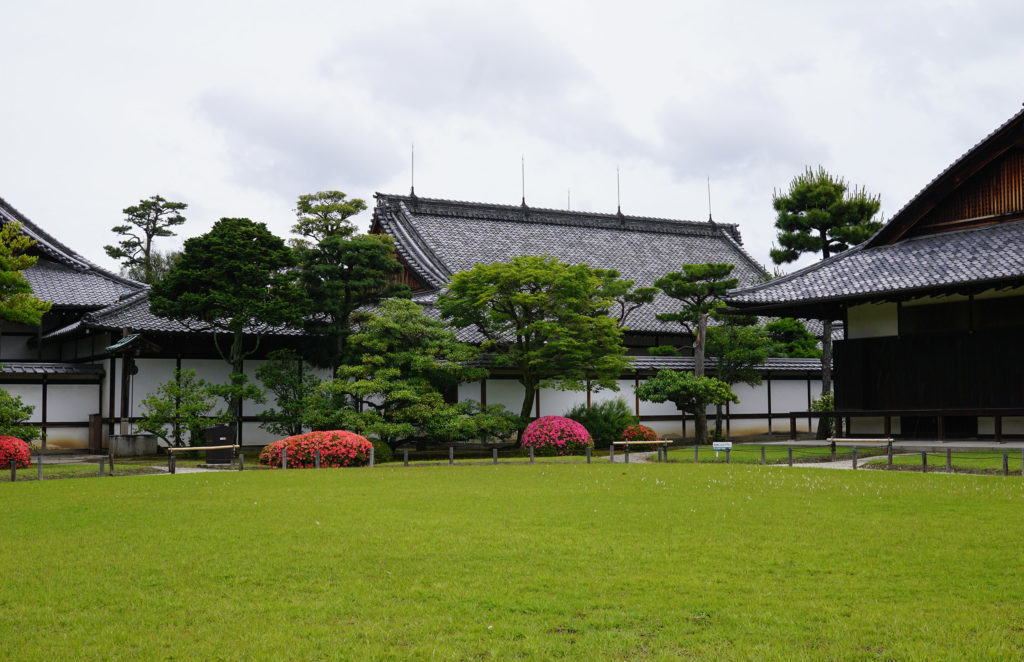
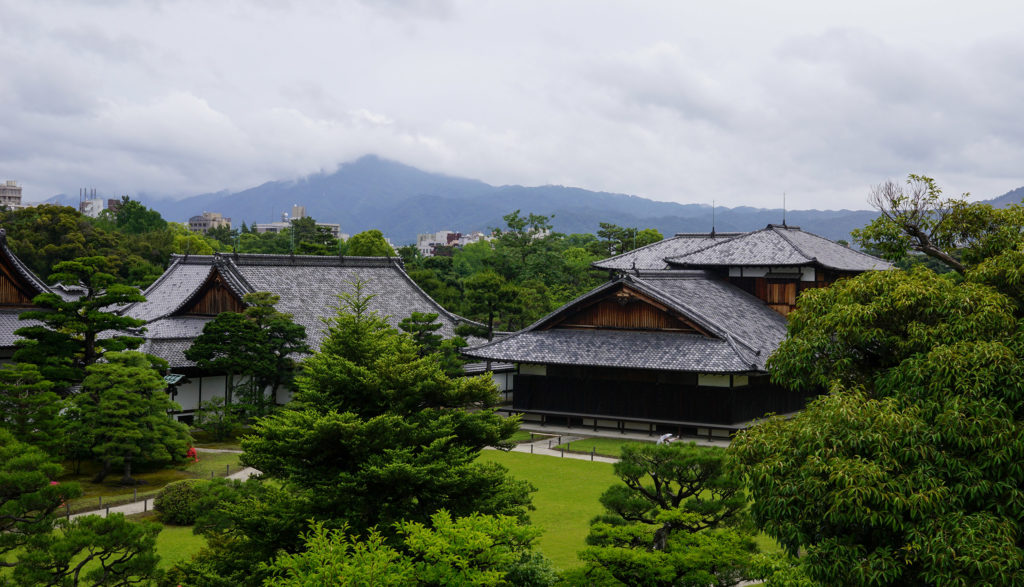
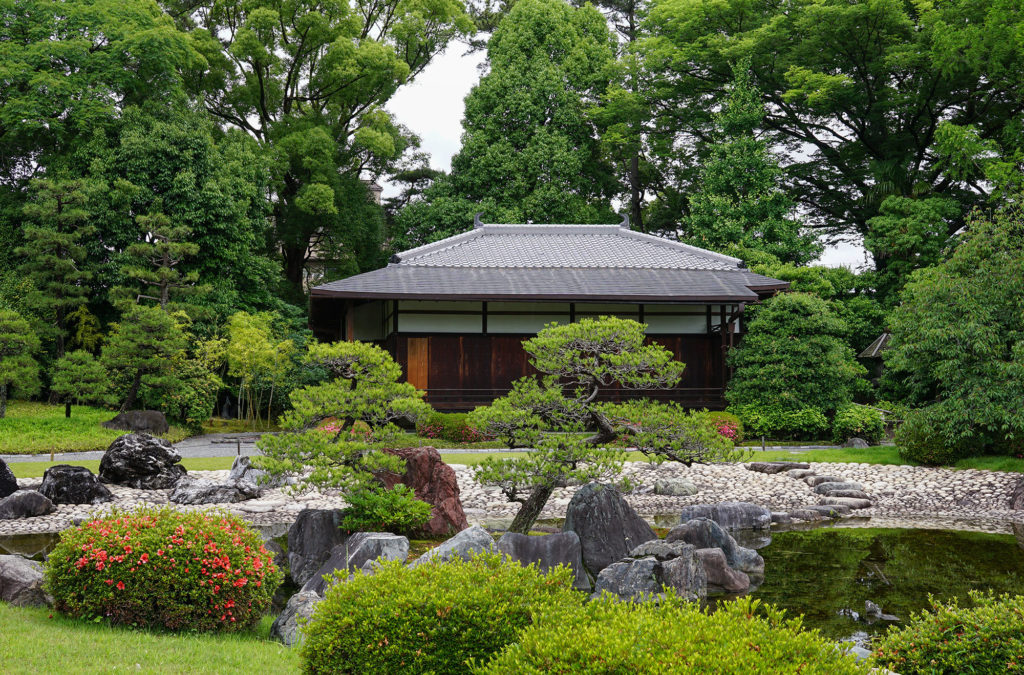
Nijo Castle’s gardens are beautiful throughout the year. Many varieties of cherry trees provide wonderful spring blossom viewing while maple and ginkgo trees make it colourful during Autumn. We were there at the start of summer and the grounds and trees lining the paths were a vibrant green. 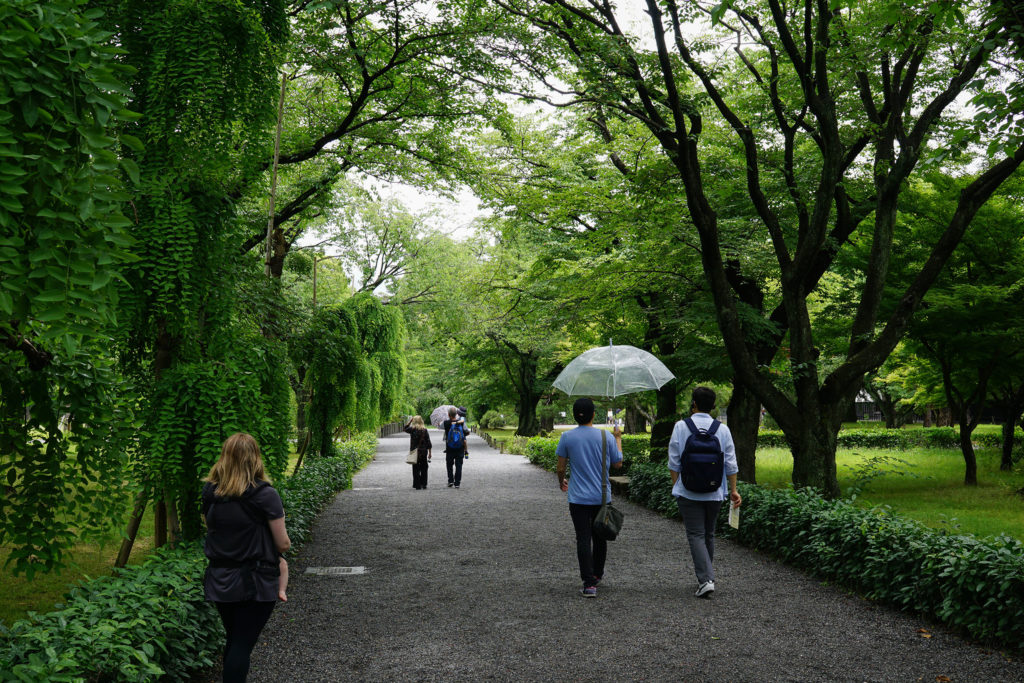
Nijo Castle to Kinkakuji
We exited through the same main entrance. From there we walked along the car park until we saw the bus stop. We got on the next bus headed for Kinkakuji. The ride took less than 20 minutes and stop is just over the road from the entrance to the Golden Pavilion. We used our icoca cards to pay the fair.
Nijo Castle with kids
If you are visiting Kyoto with kids definitely consider adding Nijo Castle to your itinerary. I strapped our nine month old into the Ergo carrier and he was happy to look around at all the different things. Our Four year old loved seeing the wonderful detail on the exterior. He found the squeaky nightingale floorboards fascinating and enjoyed the colourful gardens. Older children would appreciate the age and history as well.
Stroller friendly: A stroller could be used but may not be very useful. It would have to be left when entering the palace, the view from the foundation is via steep steps and some areas are loose gravel.
Nijo Castle info
Open hours: 8:45am – 5pm (last admission 4pm)
Closing days: Tuesdays in Jan, Jul, Aug, Dec. (closed following day if Tues is National holiday)
Closed: Dec 26 – Jan 4
Fees: 600 yen
English: Yes. Inside, signs were written in English with good descriptions. English audio guides are also available for 500 yen.

